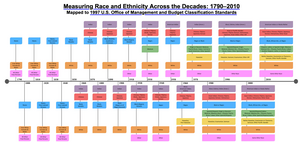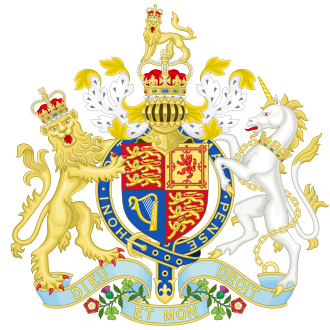Discover Your Roots
SIGN UPDiscover Your Roots
SIGN UPRace is a male name of English origin, meaning "Running Competition." It is also a dictionary word referring to the categorization of humans based on physical traits and social relations. In addition to its biological and social connotations, Race has various other meanings and uses, including its representation in arts, entertainment, and media. In literature and film, it has been featured as a theme, title, and character name. Moreover, Race is associated with acronyms, games, music, and other uses such as in mechanical devices and computer programming. The name Race reflects attributes of strength, competition, and diversity. With its rich history and multifaceted significance, Race is a name that resonates with power and individuality.

The United States Census Bureau and the Office of Management and Budget (OMB) define a set of self-identified categories of race and ethnicity chosen by residents, with which they most closely identify. Residents can indicate their origins alongside their race, and are asked specifically whether they are of Hispanic or Latino origin in a separate question. Racial categories in the United States represent a social-political construct for the race or races that respondents consider themselves to be and, "generally reflect a social definition of race recognized in this country". The OMB defines the concept of race as outlined for the census to be not "scientific or anthropological", and takes into account "social and cultural characteristics as well as ancestry", using "appropriate scientific methodologies" that are not "primarily biological or genetic in reference." The race categories include both racial and national-origin groups. From the first United States Census in 1790 to the 1960 Census, the government's census enumerators chose a person's race. Racial categories changed over time, with different groups being added and removed with each census. Since the 1970 Census, Americans provide their own racial self-identification. This change was due to the reforms brought about by the Civil Rights Act of 1964 and the Voting Rights Act of 1965, which required more accurate census data. Since the 1980 Census, in addition to their race or races, all respondents are categorized by membership in one of two ethnic categories, which are "Hispanic

The Race Relations Act 1965 was a groundbreaking piece of legislation in the United Kingdom, aimed at addressing racial discrimination. It prohibited discrimination based on "colour, race, or ethnic or national origins" in public places, marking an important step towards equality. The Act led to the establishment of the Race Relations Board, tasked with addressing complaints related to racial discrimination. The need for such legislation arose due to the significant influx of economic migrants, particularly from British colonies, in the post-World War II era. This diverse population faced daily challenges of "colour prejudice," prompting the introduction of the Act. Despite its significance, the Act had limitations, such as excluding shops and private boarding houses from its scope and the Race Relations Board's relatively weak enforcement capabilities. Subsequent amendments and the eventual repeal of the Act paved the way for further progress in combating racial discrimination in the UK. The Act's impact and its subsequent developments remain significant in the context of UK's employment discrimination law and efforts to address racism.



All images displayed on this page are sourced from Wikipedia or Wikimedia Commons.We use these images under their respective Creative Commons or public domain licenses. Wherever applicable, author attributions and license information are provided. If you believe an image is used incorrectly or outside its license terms, please contact us so that we can review and correct the issue.